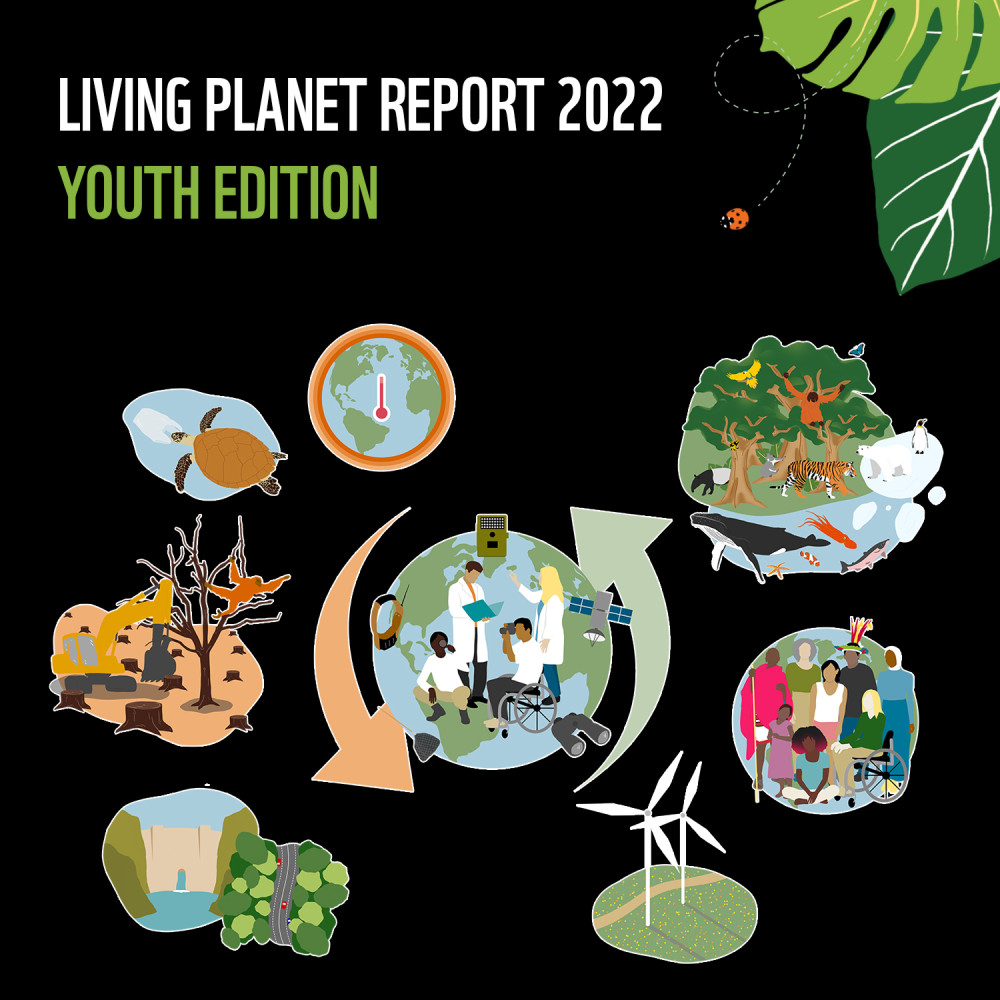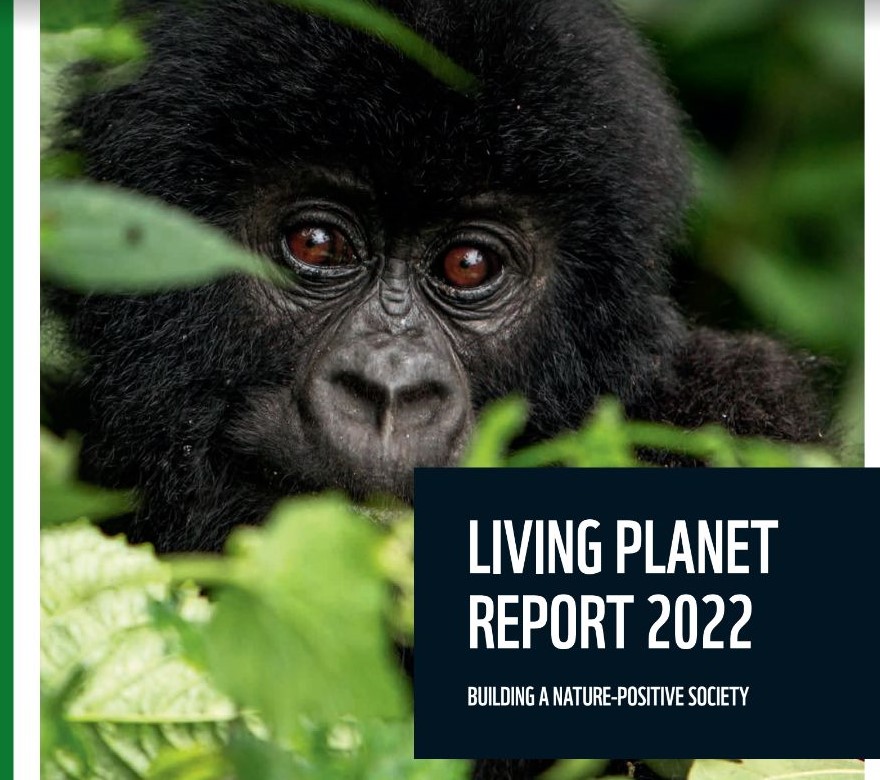- Tropical regions face wildlife populations plummeting at a staggering rate
- Freshwater species populations have suffered an 83% fall
- The report’s Living Planet Index shows that there is no time to lose in securing a nature-positive society
With its biggest dataset yet, featuring almost 32,000 populations of 5,230 species, the Living Planet Index (LPI), provided within the report by ZSL (Zoological Society of London), shows it is within tropical regions that monitored vertebrate wildlife populations are plummeting at a particularly staggering rate. WWF is extremely concerned about this trend given that these geographical areas are some of the most biodiverse in the world. In particular the LPI data reveals that between 1970 and 2018, monitored wildlife populations in Latin America and the Caribbean region have dropped by 94% on average.
Europe is one of the regions that scores lowest for “biodiversity intactness”, and it is important to note that much biodiversity had already been depleted by the Living Planet Index’ 1970 baseline year. Consequently, the wildlife populations decline of 18% in the region of “Europe and Central Asia” may not seem as drastic as the more steeply declining trends in other regions, which have been subject to human impact more recently. Nevertheless, it is alarming to see that the downward trend in Europe still continues despite some conservation successes.
The findings also show that bringing nature back to Europe will be critical and highlights the importance of the remaining almost untouched old growth forests in the CEE region for which WWF has been fighting for more than 30 years.
In less than a lifetime, monitored freshwater populations have fallen by an average of 83% globally, the largest decline of any species group. Habitat loss and barriers to migration routes are responsible for about half of the threats to monitored migratory fish species.
Sturgeon, the most threatened group of species worldwide, are a good example for this shocking trend. The recently published IUCN Red list confirms that one species has gone extinct in the Danube River despite its protection status under the EU Habitats Directive.The remaining four species still living in the Danube are highly threatened. These large migratory fish who have been on earth for more than 150 Mio years have suffered from dams blocking their migration routes in the river and to the sea and from illegal fishing.
“Europe has a lot of good strategies and policies in place to stop biodiversity loss, but it needs more political will and resources to implement them effectively on the ground. Our freshwater fauna particularly needs urgent and decisive action. Without it, we will only continue documenting the decline and place bets on the next sturgeon species to go extinct in the Danube”, said Beate Striebel-Greiter, WWF Lead Global Sturgeon Initiative.
Commenting on the global findings, Marco Lambertini, Director General of WWF International, said: “We face the double emergencies of human-induced climate change and biodiversity loss, threatening the well-being of current and future generations. WWF is extremely worried by this new data showing a devastating fall in wildlife populations, in particular in tropical regions that are home to some of the most biodiverse landscapes in the world.”
World leaders are due to meet at the 15th Conference of Parties to the Convention of Biological Diversity (CBD COP15) this December for a once-in-a-decade opportunity to course-correct for the sake of people and the planet. WWF is advocating for leaders to commit to a ‘Paris-style’ agreement capable of reversing biodiversity loss to secure a nature-positive world by 2030.
“At the COP15 biodiversity conference this December, leaders have an opportunity to reset our broken relationship with the natural world and deliver a healthier, more sustainable future for all with an ambitious nature-positive global biodiversity agreement,” said Dr Lambertini. “In the face of our escalating nature crisis, it’s essential this agreement delivers immediate action on the ground, including through a transformation of the sectors driving nature loss, and financial support to developing countries.”
Dr Andrew Terry, Director of Conservation and Policy at ZSL, said: “The Living Planet Index highlights how we have cut away the very foundation of life and the situation continues to worsen. Half of the global economy and billions of people are directly reliant on nature. Preventing further biodiversity loss and restoring vital ecosystems has to be at the top of global agendas to tackle the mounting climate, environmental and public health crises.”
Around the world, the report indicates that the main drivers of wildlife population decline are habitat degradation and loss, exploitation, the introduction of invasive species, pollution, climate change and disease.
The LPR report makes clear that delivering a nature-positive future will not be possible without recognising and respecting the rights, governance, and conservation leadership of Indigenous Peoples and local communities around the world.
The report argues that increasing conservation and restoration efforts, producing and consuming food in particular more sustainably, and rapidly and deeply decarbonising all sectors can mitigate the twin crises. The authors call on policymakers to transform economies so that natural resources are properly valued.
Business and Finance face a double emergencyNature loss and climate breakdown exacerbate each other, posing existential risks for business and finance – and must be addressed together. Increasing demands for energy and food, and the unsustainable use of our planet’s resources, are driving nature loss and climate change that threaten not just enterprise and prosperity but our very survival. Click here to learn more ... WWF BRIEFING FOR BUSINESS & FINANCE UNLOCKING A NATURE POSITIVE ECONOMY |
 |
The LpR 2022 - What does it mean for the youth?We can all feel very small in the face of these big issues, and that can be worrying. But we are not helpless, and we are not alone. Everyone can play a part in shaping a positive future for people and nature. That includes youth! Humans are the best problem solvers that have ever lived on our planet, and addressing issues like climate change, loss of biodiversity and plastic pollution doesn’t just mean having to sacrifice things we enjoy today. If we use our imaginations and work together we can reimagine our relationship with this living planet and enjoy delicious food, travel, and fun pursuits in beautiful surroundings, without taking away from the wildlife and people who share our planet. Youth has more influence than you realise. It's about the people who may be affected by what they do and say. It might be family, friends, and social media followers. Then it is about systems they can influence – their school, local businesses, or even the decision-making in their local community, district or country. Each person who gets inspired to act sends out their own ripples of change through their own sphere of influence. And when youth come together with others who feel the same they will have a louder voice, more influence, and greater impact. |
Notes to Editors:
For further information and interview requests, please contact:
WWF International media team | news@wwfint.org
Charlotte Raynsford | ZSL Press Officer (Science, Conservation & Policy) | charlotte.raynsford@zsl.org
-
*The 2022 global Living Planet Index (LPI) shows an average 69% decline in monitored vertebrate wildlife populations. The percentage change in the index reflects the average proportional change in animal population sizes tracked over 48 years - not the number of individual animals lost nor the number of populations lost.
-
The LPR 2022 is the 14th edition of WWF's biennial flagship publication.
-
The full Living Planet Report 2022 and summary versions of the report are available here.
-
Please note that successive iterations of the LPI are not directly comparable as they contain different sets of species. It is also important to note that the 1970 baseline holds different significance for the various regions monitored. In Europe and North America, pressures had been impacting species and habitats for many decades prior to 1970 so while the declines in these regions are ostensibly not as steep, it does not mean biodiversity is more intact in these regions. In fact, the report’s Biodiversity Intactness Index shows that Europe is one of the regions that scores lowest for biodiversity intactness. Conversely, tropical regions would have started at a more intact baseline in 1970 but have since experienced more rapid changes to their ecosystems.
-
The LPI is an early warning indicator on the health of nature. This year’s edition analyses almost 32,000 species populations - with more than 838 new species and just over 11,000 new populations added since the previous report came out in 2020. It provides the most comprehensive measure of how species are responding to pressures in their environment driven by biodiversity loss and climate change, also allowing us to understand the impact of people on biodiversity.








